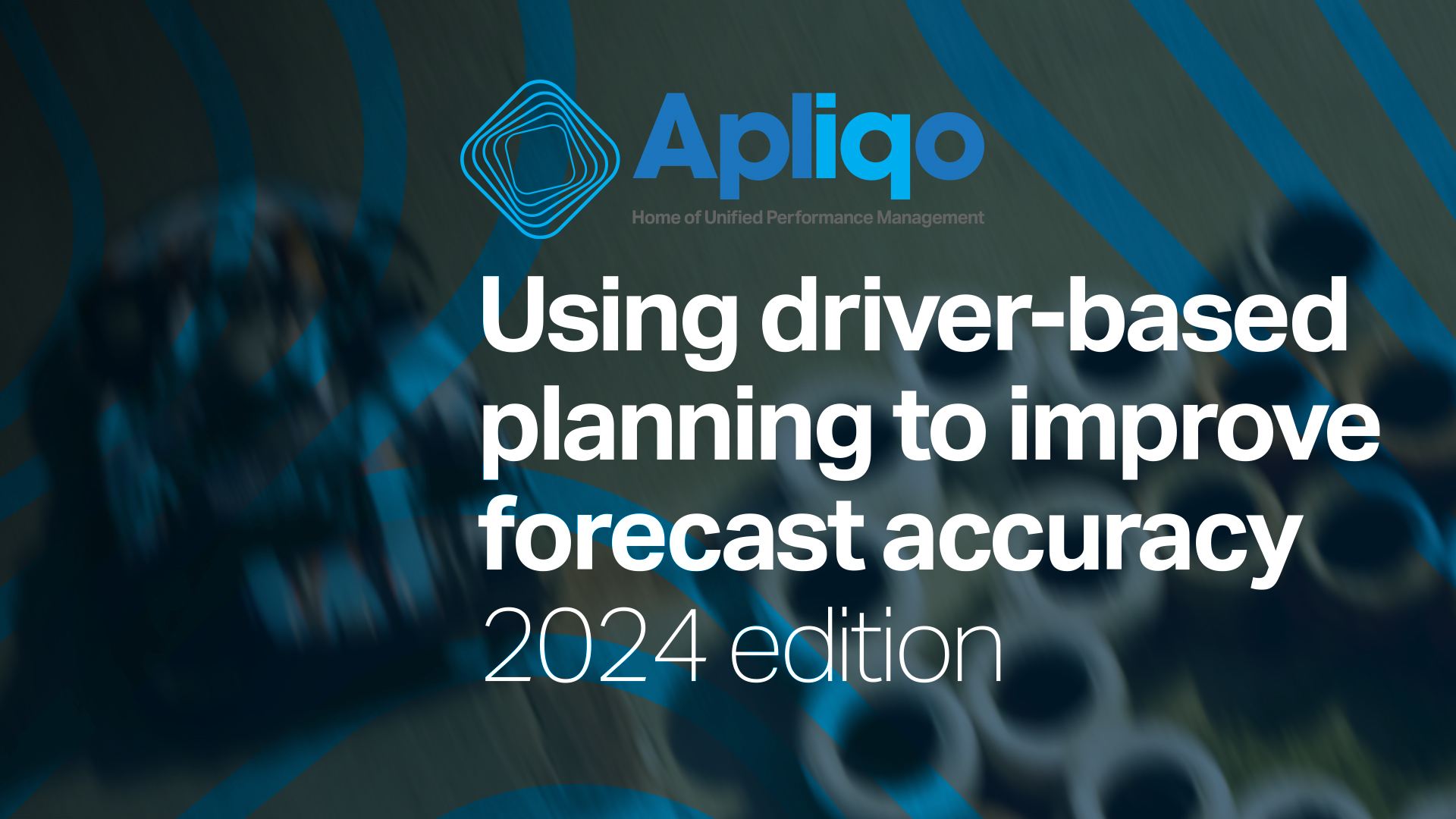When we attended the Big Data & AI event in Frankfurt last week, we knew we wanted to do something fun to show off some of the capabilities of Apliqo UX: our visualisation and application building layer for IBM Planning Analytics / TM1.
It’s easy to get bogged down in the myriad of features and possibilities that come with technology, and so we wanted to create an experience unlike anything else that we’ve done, to demonstrate just how powerful this stuff can be when used correctly.
Enter… The Grid.






Creating a memorable user experience
The Grid was our enigmatic character that walked the floor and sparked the curiosity among all sorts of different people who were meandering about. The ask was simple:
“Would you like to compete in our Performance Challenge? All you need is to beat The Grid’s time driving car around Brand’s Hatch Indy Circuit — you have 3 laps to prove your worth.”
Come on. When last did you hear that at a business conference?
How do you say no to that?
After the inevitable “Of course!”, the new competitor signed up via a QR code, took a selfie, and created a driver profile which would then be waiting for them when they got to the Apliqo booth.
Once at the booth, when it was their turn, competitors got the chance to race in the simulator (Playstation 5 running Gran Turismo 7) and complete three laps in a car of their choice. As they raced, live telemetry data from the car was displayed on the big screen, tracking things like time, position, distance covered, current speed, throttle application %, brake application %, and so on. Apliqo UX enabled this to be shown in an intuitive dashboard that was updated in real-time.
The racer would drive as well as they could, navigating the challenging terrain and the trash talk of excited onlookers, before having their results shown on the overall leaderboard which was a constant source of fascination for everyone.
We were blown away by how well this was received and it led to many fruitful conversations about how all this data was being collected, processed, analysed, and displayed in such an effective and efficient way. And this, of course, gave us the chance to shift the conversation to imagining what was possible if businesses could do this with their data. After all, we don’t think anyone there was getting a call-up from Formula 1 any time soon…
Building efficient data flows with IBM Planning Analytics / TM1 and Apliqo UX
Let’s now take a behind-the-scenes look at how we managed to create this experience:
- Step 1: Pull the data from Gran Turismo 7
The idea for this demonstration was rendered viable when we found a Python script that could pull data out of Gran Turismo 7 in a way that could be utilized in other ways. Being the data nerds that we are, this really piqued our curiosity because we wanted to see what we could do with that data. It didn’t make any sense really, but that’s why we liked it!
The Python script output data in CSV format which made it infinitely flexible and ready for all sorts of different processing workflows. The game was sending data every millisecond which, while very impressive, was unnecessary for our purposes. Instead, we set things up to pull data every 0.01 seconds, giving us around 100 data flows per second.
- Step 2: Push the data into IBM Planning Analytics / TM1
The next step was to build a workflow that could take that data and push it into IBM Planning Analytics / TM1 so that we could start to work with it. We used TM1py to do this – Cubewise’s tool that bridges the gap between Python and IBM Planning Analytics / TM1.
At first, this worked almost too well, because we found that it was bringing in every single piece of data possible into our TM1 environment, including things that were (for the time being at least) irrelevant to our purposes such as track temperature, tyre pressure, tyre temperature, and a myriad of other pieces of data within the Gran Turismo universe. It was incumbent on us to differentiate each data source and identify the ones that were truly meaningful for our purposes.
This dovetails with so much of what we work on with our clients – helping them to figure out how to make sense of all their data, focusing efforts on those pieces that offer insights and not getting bogged down in the data that merely acts as a distraction. We often speak about harnessing complexity when we talk with clients and this is a beautiful demonstration of that principle. Making strong use of your data is as much about selecting the right things to care about, as it is processing, analysing, and visualising the end results.
- Step 3: Create user profiles
The next challenge that we faced was that Gran Turismo was only really set up for one user profile and that meant that we would find it difficult to track all the different people who raced over the two days and make their data identifiable across time. As such, we needed to find a way to associate each lap time with a specific user that would then feed the final visualisations of the data.
Luckily, IBM Planning Analytics / TM1 is highly adept at these sorts of data transformations and so we just needed to build the right data flow to take advantage of that capability. What this looked like was as follows:
- The Grid helped potential participants to sign up using a QR code and a Typeform-based form in order to capture pertinent details such as their name, their photo, and so on.
- This data was then stored on a Dropbox folder automatically so that wherever The Grid roamed across the floor, the data was safely and securely stored in the cloud, ready for use.
- The specific TM1 model was then programmed to read that Dropbox folder every 30 seconds, pulling in new users as it did so – and organizing that data in a way that could then be paired with the Gran Turismo data coming in.
- Finally, when the results were being visualized on the dashboard, Apliqo UX was used to organize and display that information in a meaningful way for the end users.
- Step 4: Race!
Finally, with all that in place, our competitors could come up to the booth one at a time, be identified to their user profile, choose their car, and off they went! We had over 100 drivers over the two days, each completing three laps, and we collected all that data in real-time as it happened.
- Step 5: Analyse the data
In the background, while the racing was happening, IBM Planning Analytics / TM1 was capturing and processing the data – building a continually evolving model of what was happening in the car.
This is very similar to what happens in a business scenario. This technology is incredibly good at pulling in disparate data sources, and helping users to make it meaningful – so that they can make better decisions.
- Step 6: Visualise the data
The final step was to visualise all this data for the competitors and onlookers so that they could understand how they were doing both in real time while racing, and after they had completed their laps. This is where we wanted to show how powerful Apliqo UX could be for visualizing complex data sets in ways that help end users to make sense of it all.
The software makes it very easy and intuitive to do this so we just had to choose what types of data we wanted to display and lay out the best way to do this. Much like in business, this all comes down to the higher-level objectives and performance management metrics that matter to you, and you should use this as your north star to decide on what to prioritise.

Typically, these dashboards require the user to refresh them to pick up the new data, but obviously, this wasn’t going to work in the middle of a race, and so we wrote some JavaScript code to refresh the widget every 5-10 seconds. This allowed for the real-time telemetry data coming from IBM Planning Analytics to be displayed in near real-time, creating a buzz around every lap that was being completed.
How does this translate to Business?
This was an awful lot of fun but we truly do believe that this demonstration translates to what we’re trying to accomplish in our ‘day job’. Businesses are doing these sorts of data transformations every single day, and doing it well can be a huge competitive advantage in a data-first world.
Here at Apliqo, we focus on helping clients gather all the data that is being generated into one place, enabling advanced processing and analysis, before presenting that information in meaningful ways that can drive better business decisions. That’s what this technology is capable of and hopefully, by showing it in a completely different context, it gives you a sense of the breadth of possibilities here.
If you would like to explore what this could mean in your unique context, be sure to get in touch today. We’d love to hear from you and see how we can help!







